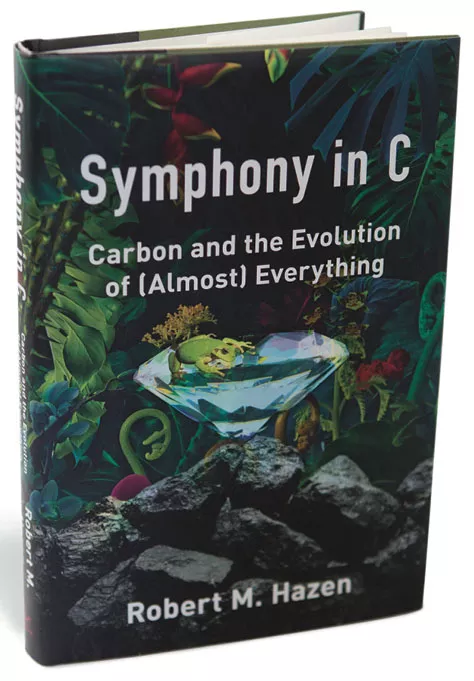In Review: Symphony in C
Robert M. Hazen's new book is a mash note to life's building block—carbon

At one point in Symphony in C: Carbon and the Evolution of (Almost) Everything (W.W. Norton & Company, 2019), author Robert M. Hazen is in a taxi in Rome with Jesse Ausubel, another scientist. The two are discussing "the rich variety of minerals and their skewed distribution" when Ausubel suddenly stops. "Why," he asks, "are so many minerals rare?"
"Immediately," Hazen writes, "it struck us that if we are ever to understand all the forms of carbon, we had better get a grip on the numerous uncommon carbon-bearing crystals."
There is nothing about carbon that Hazen, executive director of the Washington, DC—based Deep Carbon Observatory, is not a huge fan of, and his enthusiasm is infectious. This may be especially true if you, like so many of us, have become accustomed to seeing the word carbon in the context of Earth's atmosphere, as in carbon atoms covalently double-bonded to oxygen atoms, a.k.a. carbon dioxide.
Symphony in C has grand, symphonic ambitions (the sections have titles like "Intermezzo" and "Scherzo") and ranges from the birth of the universe some 13 billion years ago to the origin of the atmosphere. But its best feature is the small histories scattered throughout the book, like Hazen's tales of the scientists whose research widened our understanding of carbon, an element that manages to be both ubiquitous and mysterious.
Among those scientists are Williamina Fleming, Annie Jump Cannon, and their fellow "Harvard computers," who made breakthroughs in the classification and understanding of stars. The brief biographies are interspersed among descriptions of why carbon bonds so readily with other elements and the debate over how much carbon Earth actually holds, which only adds to the book's charm.
 The Magazine of The Sierra Club
The Magazine of The Sierra Club



